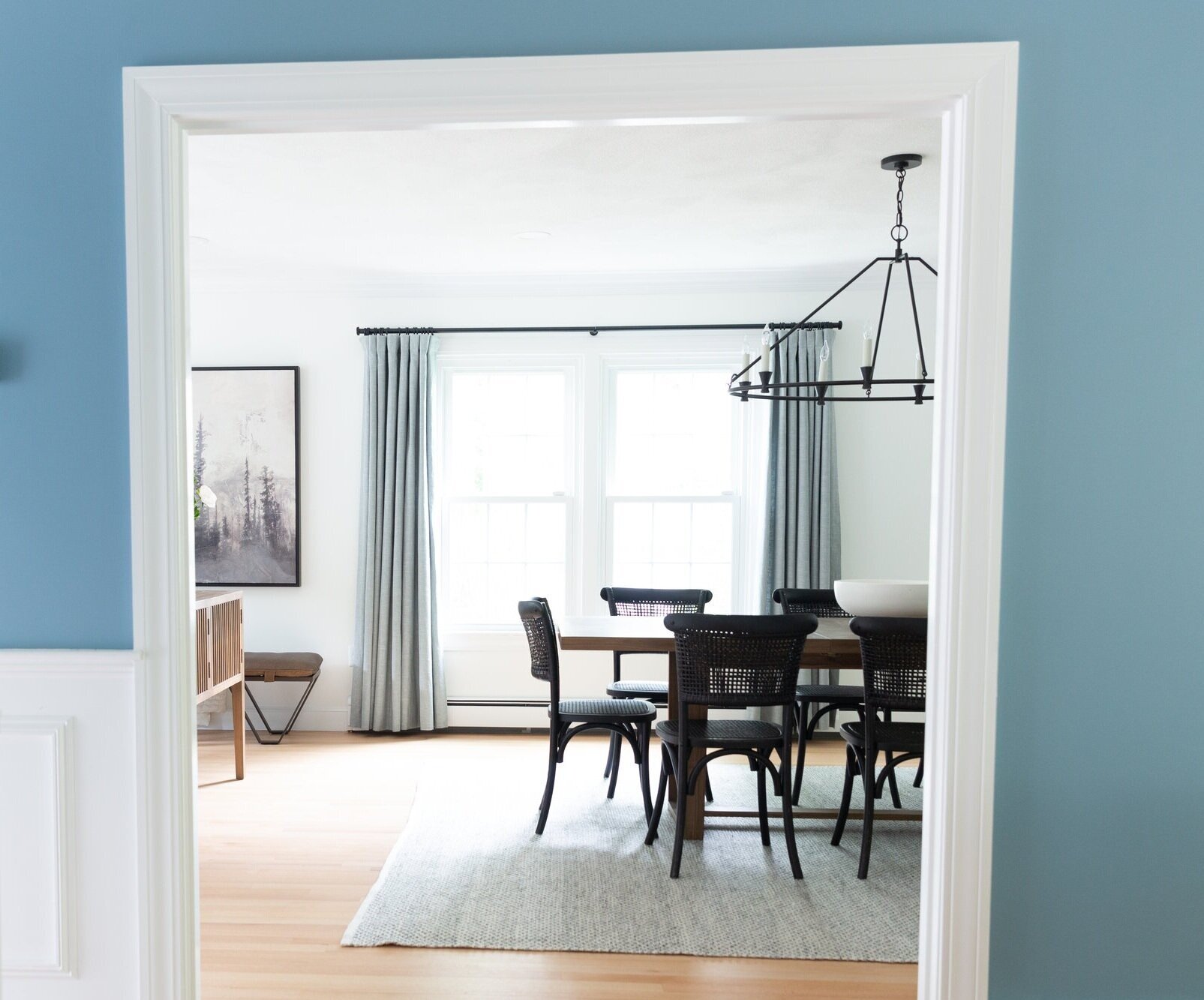Lessons from Before and After - Mixed Up Molding
/Today’s blog post is inspired by our Fairchild Project. It’s a lesson in how molding and paint can change everything. Plus we’re going to share some thoughts on window treatments and cased openings. It’s a bit of a design lesson and we’d love to hear whether this type of content interests you (versus shopping round ups or project reveals) - leave a comment with your thoughts!
Ok, here we go. Below is a photo of where we started.
In this 6 foot stretch of wall we have 3 wall colors and 5 types of molding (two different types of box molding, trim around the cased opening, beadboard, and chair rail. It’s very confused. It’s way too much.
Here is a labeled version of the photo so you don’t miss any of the madness.
Lesson 1: One wall = One color
We’re talking about the wall, not the trim (not baseboard, not door/window trim, not crown molding) and not the ceiling. The trim and ceiling will most often be white or maybe a different contrasting color or maybe everything will be the same color (that conversation is for another lesson!). And yes, there will be the occasional wall with stripes and wallpaper with a million colors. But, without further confusing the matter, the rule in its most simple form is that each wall should be one color only. You switch colors at natural and intentional places. A new room can be a new color. If you’re painting an accent wall, you switch colors at the corner.
In this before, the blue wall ends at one side of the cased molding without any natural stopping point. It’s not a corner and there is no full floor-to-ceiling-trim to define the end. The painter had to freehand a straight line in two spots. If you have to free hand the end of one color and the beginning of a next, don’t.
Lesson 2: Pick a molding and stick to it
Pick one style baseboard, one style crown molding, and one style window and door trim for your home. Then if you’re going to do decorative molding on the wall - shiplap, beadboard, box molding, etc. - pick one per room. Too many different ideas will fight with one another and become a distraction. You don’t want people to wonder if something was on purpose. Good design looks (and is) intentional.
Now let’s talk about the after.
We resolved the paint problem by continuing the blue to both sides of the wall, ultimately ending the blue at a corner (not pictured). We resolved the molding mixup by removing most of it. We 86’d the box molding above the cased opening. It was connected to nothing…just sort of floating up there. We also removed all the beadboard and the chair rail. Not only is the beadboard and chair rail (on the right in the original) different from the box molding (on the left) in actual look and construction, it’s also a different in style. Box molding is a traditional woodwork. Beadboard with that specific chair rail has a cottage/country feel.
Why did we choose the box molding over the beadboard? A couple reasons. First, the box molding continues down the hall and is a big presence in a connected area of the home. Second, box molding is traditional (aka classic) and not niche or trendy. Classic elements mix with everything. They play nicely.
Two more quick lessons while we have you.
Lesson 3: Drapes make a room feel taller
We are the first to concede that drapes are not for every room. We don’t use them everywhere and we don’t love them everywhere. However, in a dining room with short (or just not tall) ceilings, they are magic. Check out the side-by-side below.
Without the visual context that curtains provide, the room looks squat. Add the curtains and everything is taller and bigger. Curtains draw the eye up and finish the space. Hence, the second half of this lesson is to install your curtain rods as high on the wall as they will go!
Lesson Four: Use a Cased Opening Like a Picture Frame
The glimpse of a room that you see through a cased opening should be intentional. We’re coming full circle back to Lesson 1 because it really is all about being intentional with your choices. You can center something in the cased opening - a fireplace, a table, a sofa, an oversized piece of art. Or you can give part of the furniture story, purposefully revealing only half the scene. It’s the same principal as photo composition. Sometimes asymmetry and the thing not pictured are just as good (if not better) than the carefully centered portrait.
In our furniture plan for the dining room, you see half the dining room table and half the chandelier through the cased opening. It wouldn’t have been nearly as beautiful if you saw just one candlestick of the chandelier. That’s not enough to give you a sense of what’s happening. It also would have been a fail if the cased opening framed a mostly empty part of the room. Unlike a fully open concept space, a cased opening requires you to consider what will be seen when looking from one room through a somewhat constricted lens to the next room. So, compose your vignette purposefully.
Design School is out for the day. Now go and enjoy your weekend!
- Leah
* this post contains affiliate links*















